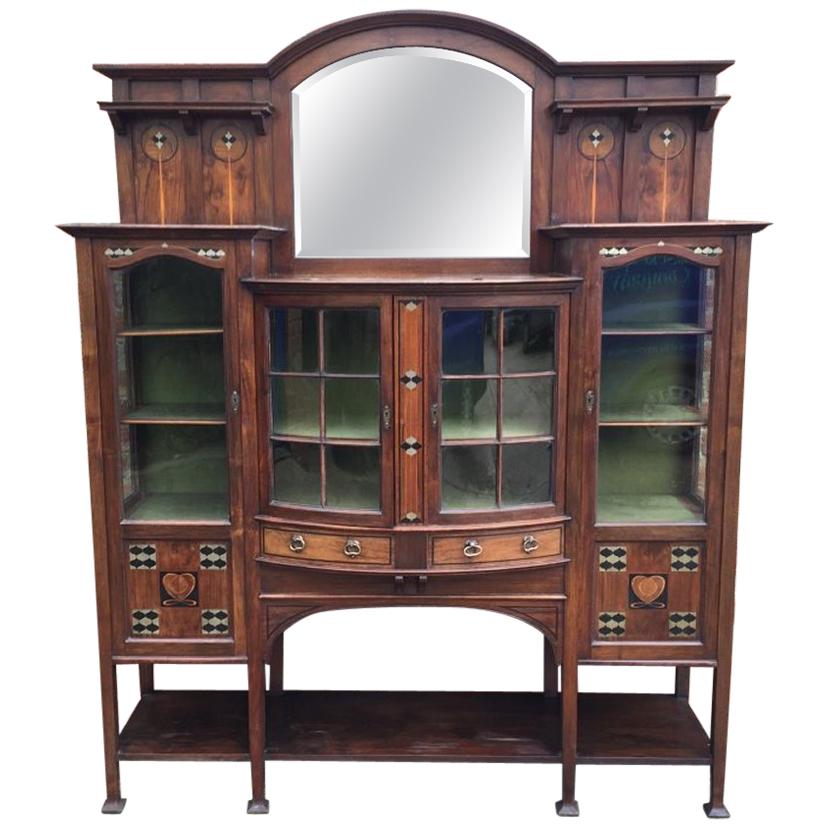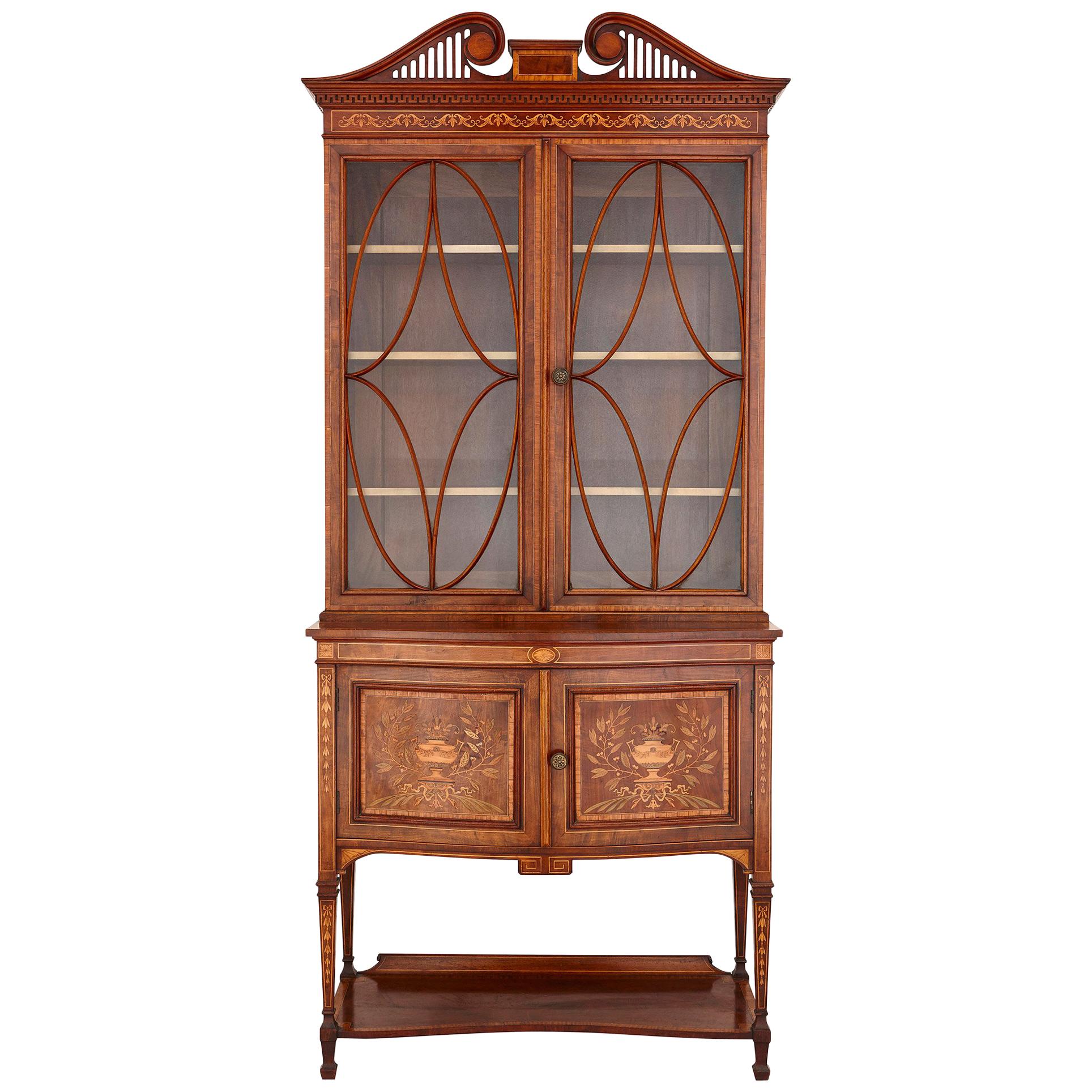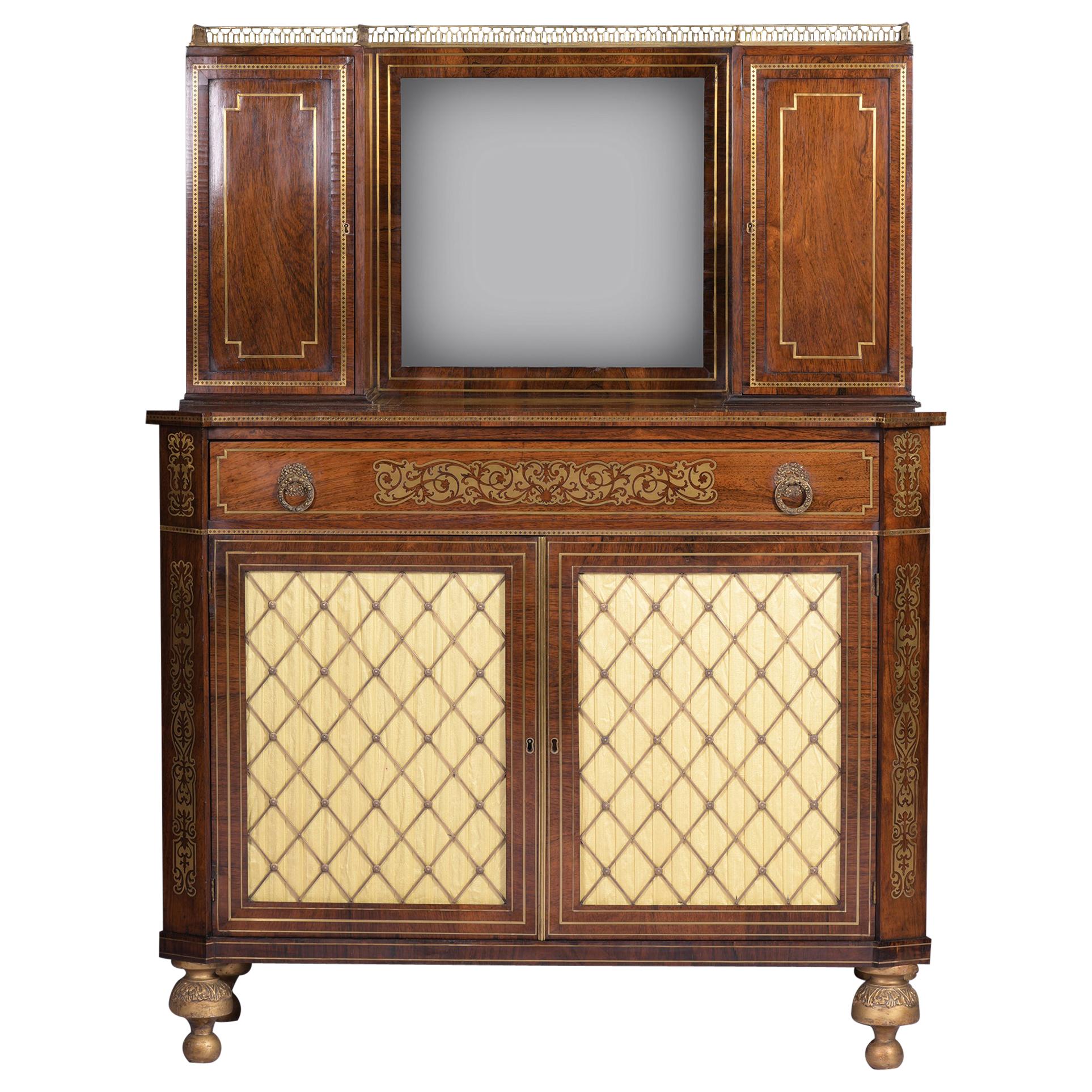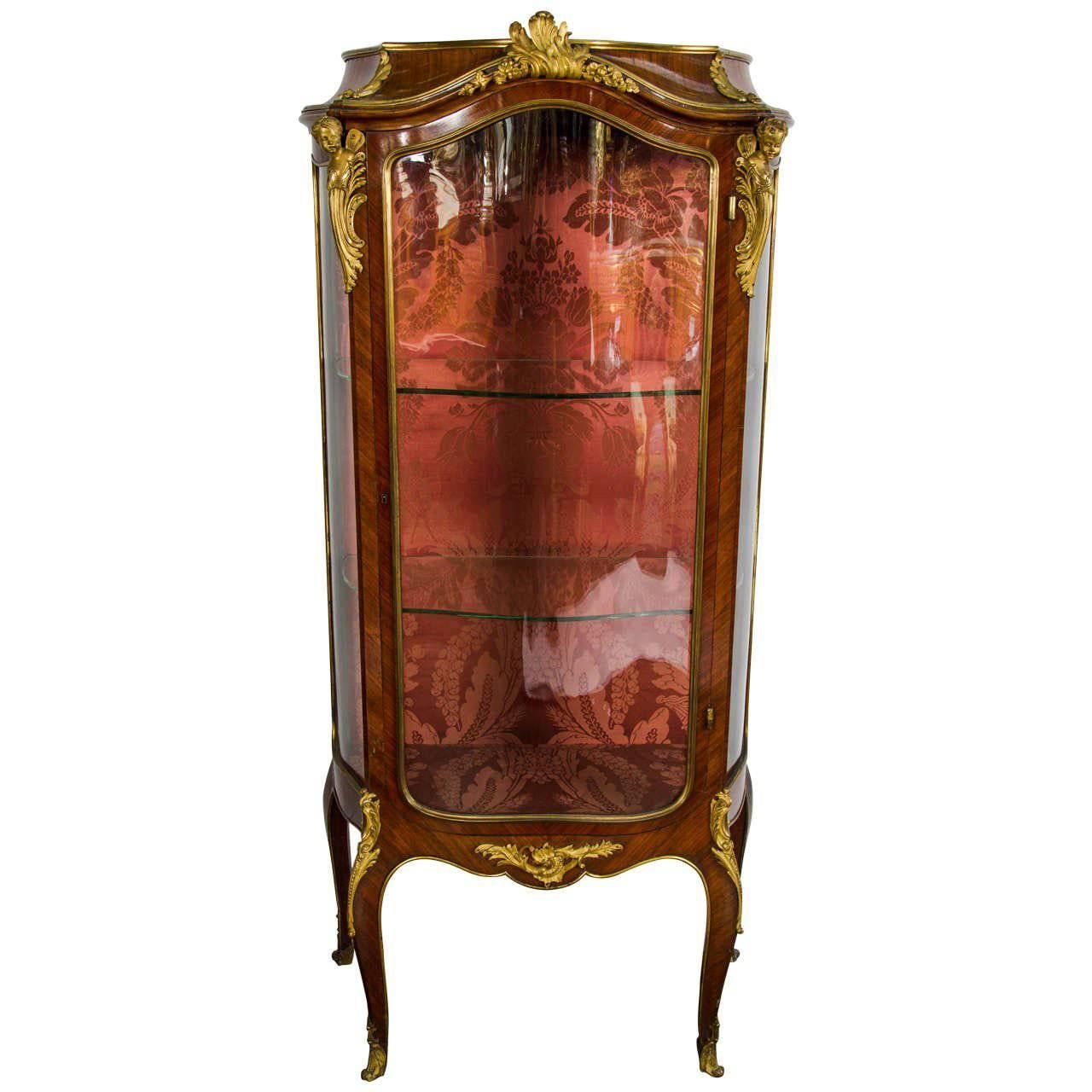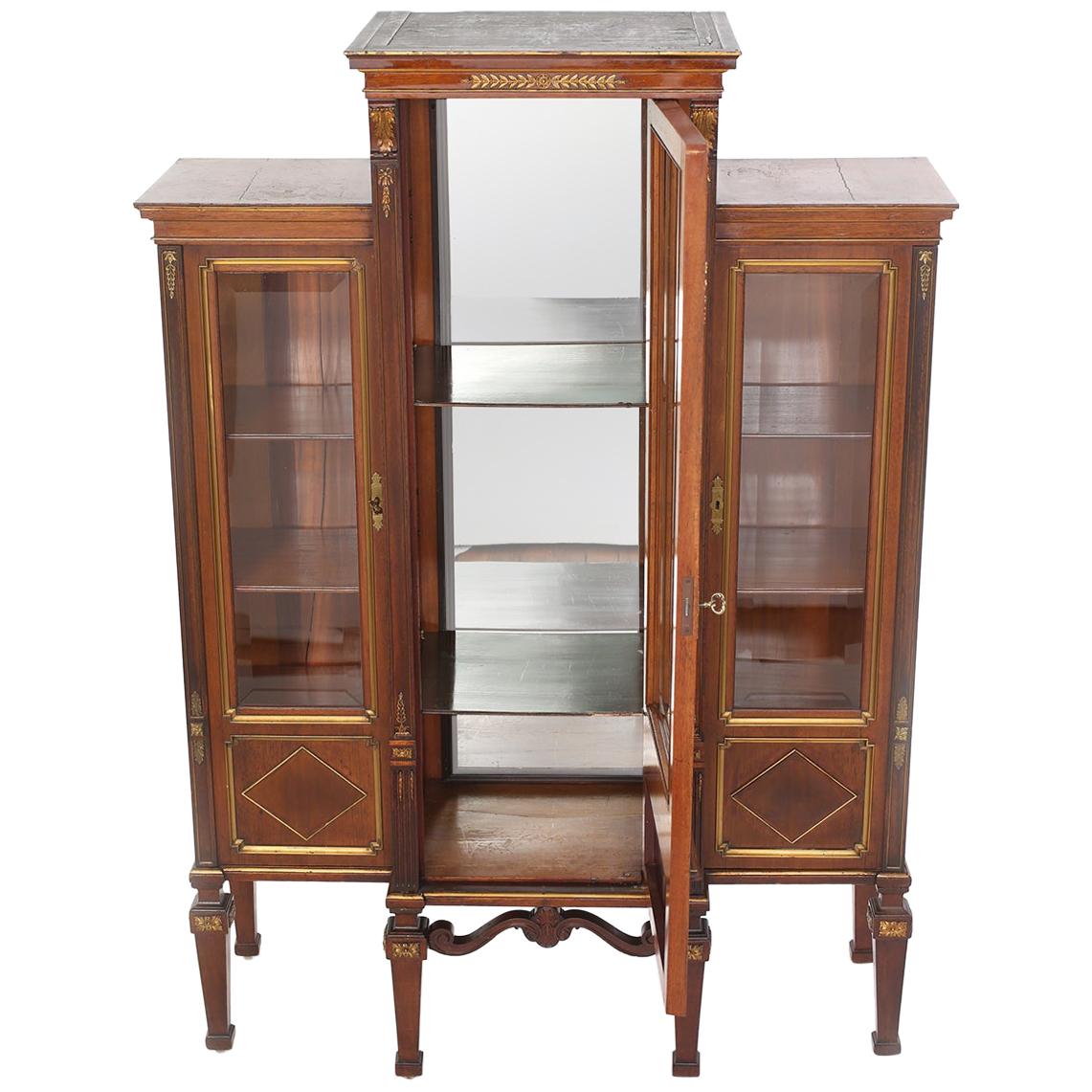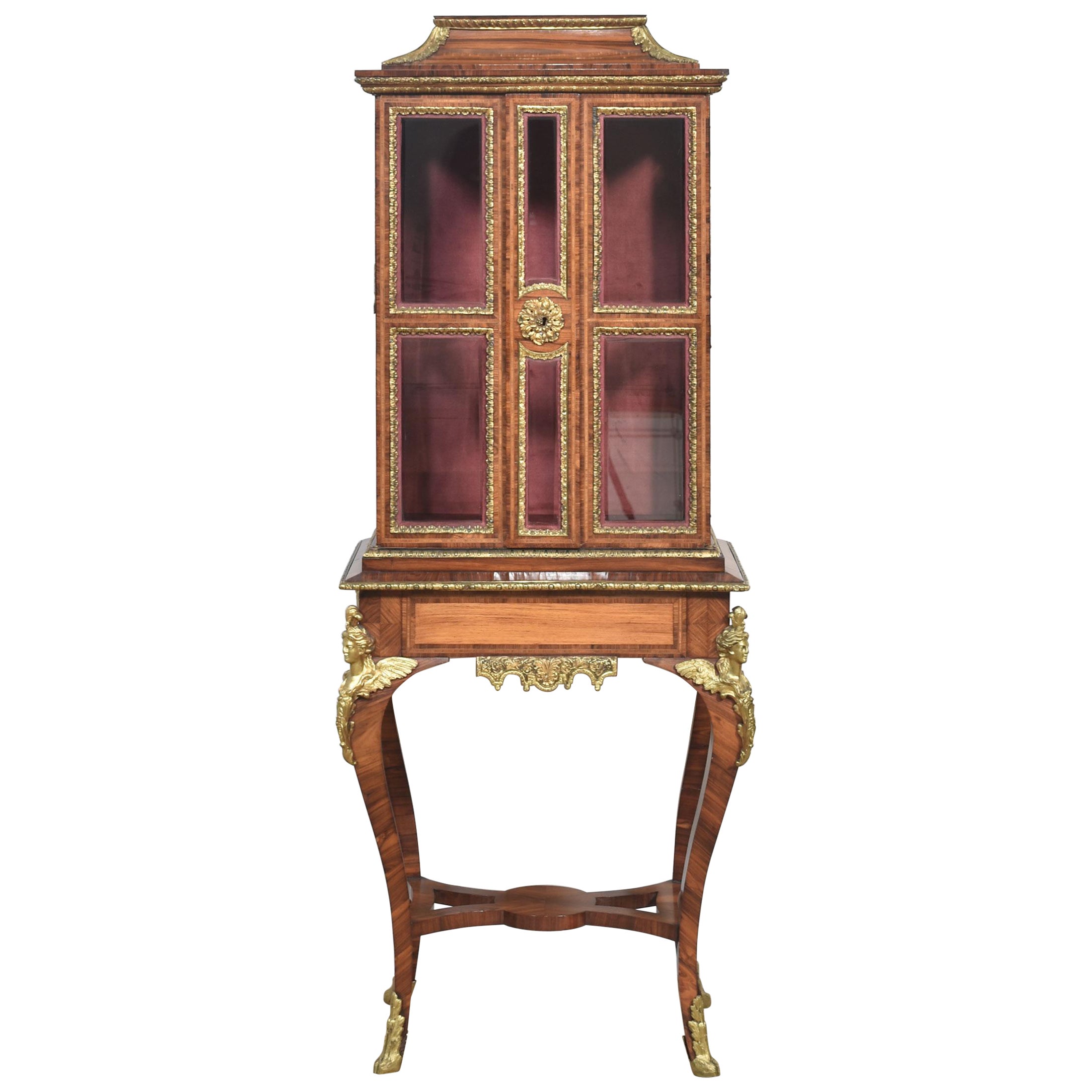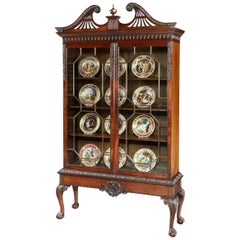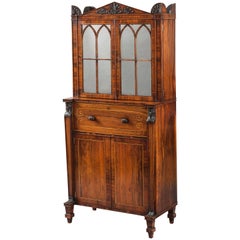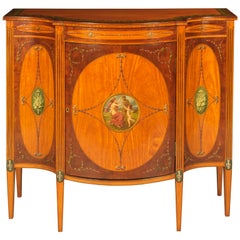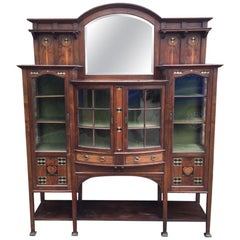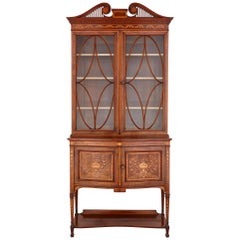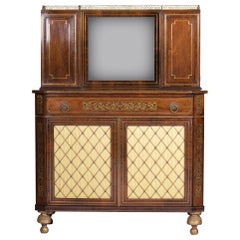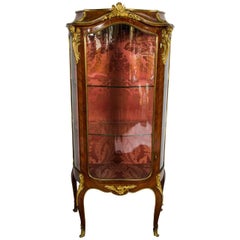Items Similar to Good Antique Drawing Room Cabinet Attributed to Jackson & Graham
Want more images or videos?
Request additional images or videos from the seller
1 of 5
Good Antique Drawing Room Cabinet Attributed to Jackson & Graham
$30,992.82
£22,500
€26,523.60
CA$42,619.78
A$47,404.14
CHF 24,810.31
MX$578,174.23
NOK 311,750.62
SEK 293,241.70
DKK 197,972.86
About the Item
Constructed in Coromandel, and having well executed and designed inlays in bone, lemon wood, and holly, with gilt wood accents; of arc-en-arbalette form, rising from a plinth base, the central mirrored lockable door housed within inlaid stiles, and enclosing a shelved interior; the open quadrant form shelved ends having plate mirror glass backs.
- Attributed to:Jackson & Graham (Designer)
- Dimensions:Height: 38 in (96.52 cm)Width: 48.5 in (123.19 cm)Depth: 18 in (45.72 cm)
- Materials and Techniques:
- Place of Origin:
- Period:
- Date of Manufacture:circa 1870
- Condition:Repaired: Each item has undergone careful inspection and restoration by a conservation specialist in order to guarantee the original quality and integrity of the object. Wear consistent with age and use.
- Seller Location:London, GB
- Reference Number:Seller: 77301stDibs: LU9547735641
About the Seller
5.0
Recognized Seller
These prestigious sellers are industry leaders and represent the highest echelon for item quality and design.
Established in 1964
1stDibs seller since 2012
53 sales on 1stDibs
Typical response time: 4 hours
Associations
The British Antique Dealers' AssociationLAPADA - The Association of Arts & Antiques Dealers
- ShippingRetrieving quote...Shipping from: London, United Kingdom
- Return Policy
Authenticity Guarantee
In the unlikely event there’s an issue with an item’s authenticity, contact us within 1 year for a full refund. DetailsMoney-Back Guarantee
If your item is not as described, is damaged in transit, or does not arrive, contact us within 7 days for a full refund. Details24-Hour Cancellation
You have a 24-hour grace period in which to reconsider your purchase, with no questions asked.Vetted Professional Sellers
Our world-class sellers must adhere to strict standards for service and quality, maintaining the integrity of our listings.Price-Match Guarantee
If you find that a seller listed the same item for a lower price elsewhere, we’ll match it.Trusted Global Delivery
Our best-in-class carrier network provides specialized shipping options worldwide, including custom delivery.More From This Seller
View All19th Century Display Cabinet in the Manner of Thomas Chippendale
By Thomas Chippendale
Located in London, GB
A display cabinet in the manner of Thomas Chippendale.
Constructed in a well-figured Honduras mahogany, with carved highlights; rising from cabriole leg 'ball and claw' feet, with acanthus carving at the knees, with swept and carved corner blocks; over, a running 'egg-and-dart moulding with a central leaf carved cartouche centred about a scallop shell, are two lockable glazed doors, with astragals delineating fifteen panes enclosing a shelved interior; surmounted by a pierced swan neck pediment with paterae teminals set about a turned finial,
circa 1910.
Thomas Chippendale the Elder (1718-1779)
Yorkshire born, a highly skilled cabinet maker and designer, published in 1754 his 'Gentleman & Cabinet Maker's Director', a volume of instantly recognisable and idiosyncratic designs, that was reprinted time and again, serving as an essential manual for cabinet makers the length and breadth of England. Working from 60-62 St Martins Lane, London his output is regarded as the ne plus ultra of 18th century...
Category
Early 20th Century English Chippendale Cabinets
Materials
Glass, Mahogany
George IV Display Cabinet of Small Size
Located in London, GB
A George IV display cabinet of small proportions.
Of breakfront form, constructed in goncalo alves, with brass inlays; rising from carved gadroon capped naturalistically carved a...
Category
Antique 19th Century English George IV Cabinets
Materials
Brass
English Regency Period Secrétaire Cabinet with Egyptian Motifs
By George Oakley
Located in London, GB
A secrétaire cabinet of the Regency period
Firmly attributed to George Oakley.
Constructed in a finely faded and patinated goncalo alvez, having holly and purple heart stringing;...
Category
Antique 19th Century English Regency Cabinets
Materials
Purpleheart, Satinwood, Holly
19th Century English Cabinet with Neoclassical Painted Scenes
Located in London, GB
Fine side cabinet in the Adams Manner
Constructed in finely figured satinwood and mahogany of great depth of colour, with polychrome hand painted decoration in the style of Angeli...
Category
Antique 19th Century English Neoclassical Commodes and Chests of Drawers
Materials
Mahogany, Satinwood
19th Century French Belle Époque Display Cabinet in the Manner of François Linke
By François Linke
Located in London, GB
A French Bijouterie
In the manner of François Linke
Designed in the Louis XV style and constructed in a wonderfully marked Kingwood, with precise...
Category
Antique Late 19th Century French Louis XV Cabinets
Materials
Ormolu
19th Century Napoleon III Vernis Martin, Kingwood and Mahogany Cabinet by Linke
By Maison Grimard
Located in London, GB
A fine cabinet of the Napoleon III period
Retailed by Grimard of Paris
Almost Certainly by François Linke
Constructed in Kingwood and mahogany, with extensive decoration of high qu...
Category
Antique Late 19th Century French Napoleon III Cabinets
Materials
Ormolu, Bronze
You May Also Like
Waring and Gillows, an Exceptional, Bow Fronted Inlaid Display Cabinet
By Waring & Gillow
Located in London, GB
An outstanding Arts & Crafts display cabinet, with stylized ebony and pewter inlays. Arched bevelled mirror to the back above display area, flanked by two upper shelves stylized inla...
Category
Antique 1890s English Arts and Crafts Cabinets
Materials
Pewter
English Victorian Period Vitrine Cabinet
Located in London, GB
This antique display cabinet, or vitrine, is an exquisite piece of furniture: dating from the late Victorian period in England, the cabinet is beautif...
Category
Antique Late 19th Century English Victorian Cabinets
Materials
Glass, Mahogany, Wood
Early 19th Century English Regency Side Cabinet in the Manner of John Mclean
By John Mclean
Located in Dublin, IE
A ver fine Regency Goncalo Alves and brass inlaid side cabinet in the manner of John Mclean, of rectangular form, with raised back centred with a mirror plate, flanked by twin cupboard...
Category
Antique Early 19th Century English Regency Cabinets
Materials
Brass
19th Century French Vitrine
By François Linke
Located in Brighton, Sussex
A fine quality French kingwood, marble topped vitrine having shaped glass to the front and sides. Beautiful ormolu mounts and raised on cabriole legs. The the manner of 'Linke.'.
Category
Antique 1890s French Vitrines
Materials
Ormolu
$7,576 / set
Early 19th Century Three Part French Display Cabinet
Located in Tarry Town, NY
This stunning early 19th-century mahogany wood three-part French display china cabinet is a true testament to exquisite craftsmanship and timeless elegance. With its gracefully curve...
Category
Antique Early 1800s French Cabinets
Materials
Brass
19th century display cabinet on stand
Located in Cheshire, GB
Display cabinet on stands the moulded pagoda-style top above bevelled glazed doors opening to reveal a velvet-lined interior and single glass shelf. The base section fitted with free...
Category
Antique 19th Century British Cabinets
Materials
Wood
More Ways To Browse
Antique Drawing Room Furniture
Jacksons Design
Lemon Wood
Antique Jackson
Antique Quadrant
Coromandel Cabinet
Bone Inlay Door
19th Century Coromandel Cabinets
Coromandel Mirror
Display Cabinet 1930s
Antique 1930s Door
Slat Door
Slatted Doors
Vintage File Cabinet
Vintage Filing Cabinets
Danish Record
Antique Bronze Door Handles
Art Deco Walnut Shelves
